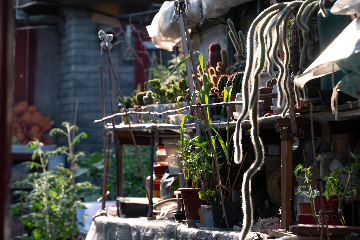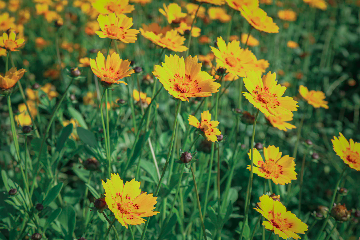As someone who’s spent many an afternoon ankle-deep in wet sand and seaweed, I learned early that the groundwork—quite literally—matters most. For home gardeners in Seattle and beyond, healthy soil is less a luxury and more a necessity. Whether your garden dreams involve florals or food crops, nurturing what lies beneath the surface can be the most cost-effective and rewarding investment you make.
Healthy soil is alive—a dynamic mix of mineral particles, organic matter, water, air, and a bustling community of microorganisms and insects. If you listen to seasoned gardeners, the refrain is consistent: compost is king. Homemade compost not only reduces household waste but also enriches the soil, fostering that coveted crumbly texture and vital nutrient profile. Materials like shredded leaves, untreated grass clippings, and food scraps break down into what’s often called “black gold.”
For those in urban settings (hello, Seattleites!), resourcefulness goes a long way. Collecting coffee grounds from local cafes or sourcing wood chips from landscaping businesses are cost-conscious practices that add both organic content and biodiversity to your beds. Even worm castings—yes, worm poop—work wonders for plant vigor, though I’ll admit the thought made me laugh before I tried it myself. If you have the space, building a basic compost bin from old pallets is easy, affordable, and surprisingly gratifying.
Organic amendments like well-rotted manure, mushroom compost (bountiful here in the Pacific Northwest), and leaf mold deliver a slow-release boost to garden beds. Just remember: fresh manure should be composted before use to avoid burning delicate roots. For sandy soils—a common local challenge—regular compost and mulch applications will help retain moisture and nutrients, transforming gritty patches into productive paradise.
Smart, Simple Soil Practices
Testing your soil is as close to a gardening cheat code as it gets. Kits are inexpensive and clarify exactly what your soil needs (and doesn’t need). Before adding mysterious internet concoctions or trendy amendments, let your test results guide you. Seattle soils often lean acidic; soil testing helps pinpoint if a dose of lime or another adjustment is warranted for vegetable or perennial beds.
Mulching, another often-underestimated step, works double-duty. Mulch helps regulate soil temperature, reduce weed pressure, and, when organic, eventually breaks down to nurture the earth below. Apply a 2 to 4-inch layer of shredded wood mulch, bark, or leaves—but keep mulch several inches away from plant stems or trunks to prevent moisture buildup and stem rot. If budget is tight, shredded leaves or grass clippings make excellent alternatives.
Minimize soil compaction by sticking to designated paths and only working beds when the soil is dry enough to crumble in your hands. Overly wet soil is prone to structural damage; patience pays off in long-term soil health. Raised beds built from untreated pallet wood or upcycled materials offer improved drainage and give you full control over your growing medium—a boon if your native soil is challenging.
Composting in place—trenching kitchen waste directly into garden beds or allowing plant debris to decompose where it falls—eliminates extra steps. Wormeries and green manure cover crops, like vetch or clover, are low-tech, high-reward ways to boost fertility, especially if you’re hoping to avoid synthetic fertilizers or chemicals.
Practical Soil-Building Tips
Crop rotation is another simple yet vital technique, especially for veggie growers. Rotate plant families each year to prevent nutrient depletion and manage pests naturally. Planting cover crops in winter helps suppress weeds, prevent erosion, and fix nitrogen into the soil, priming beds for spring.
If you’re new to these practices, here’s a quick breakdown of some common organic amendments and their benefits:
| Amendment | Main Benefits |
|---|---|
| Compost | Improves structure, fertility, and microbial health |
| Shredded leaves | Adds organic matter, suppresses weeds, costs nothing |
| Coffee grounds | Supplies nitrogen, improves texture |
| Well-rotted manure | Boosts nutrients, encourages worms |
| Worm castings | Enhances root growth, increases resilience |
| Green manure (cover crops) | Restores nitrogen, breaks up compacted soil |
Cultivating Resilient, Happy Gardens
Improving soil is a journey, not a destination. Annual amending, ongoing composting, and periodic testing get you closer to beds bursting with life. My own garden is proof: former sandy, stubborn ground now yields lush spring peas, vibrant native perennials, and the occasional snack for slugs—who, like me, appreciate healthy soil.
The right groundwork pays off each season, whether you’re tending a city balcony or a sweeping landscape. At Happy Garden Projects, we’re committed to demystifying soil care with practical guidance, local insight, and encouragement. Your soil is unique—as dynamic as the Pacific tides—and with a little nurturing, it will reward you with a thriving, vibrant garden.
References:
[1] Practical Tips for Healthy Soil in a Home Garden. Penn State Extension
[2] Money Saving Garden Tips: Soil Improvement. Thompson & Morgan Blog
[3] Practical Ways to Improve Your Garden Soil. Gingham Gardens
Read More

Ingrid Felton
Author
Born in a small coastal town in Maine, Ingrid Felton spent her formative years exploring tide pools and sketching sea birds. She earned a degree in marine biology before transitioning to work as a scientific illustrator, blending her love for the ocean with her artistic skills.
In her thirties, Ingrid moved to Seattle, where she balances freelance contracts with volunteering at local environmental organizations. She is known among peers for her detailed watercolors and her advocacy for sustainable marine practices.


